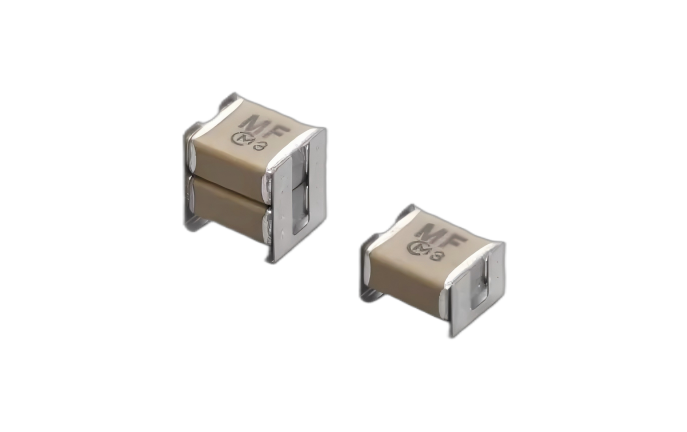High voltage capacitors refer to capacitors with a rated voltage of several hundred volts to several thousand volts or more, widely used in fields such as power electronics, pulse power, high-voltage testing, medical equipment, etc. The following are the main categories, characteristics, applications, and selection considerations of high-voltage capacitors:

1、 Classified by medium material
High Voltage Ceramic Capacitors
Medium: Ceramic materials (such as barium titanate, strontium titanate).
characteristic:
High voltage withstand: The rated voltage can reach several thousand volts (such as 3kV, 5kV, 10kV).
Good high-frequency characteristics: low equivalent series inductance (ESL) and high self resonant frequency.
High temperature stability: C0G/NP0 type has an extremely low temperature coefficient.
Compact size: suitable for high-density circuit boards.
Application: High frequency and high voltage power supply, laser power supply, electromagnetic compatibility (EMC) filtering.
Common models: C0G, X7R, Y5V (high voltage type).
High Voltage Polypropylene Capacitors (CBB)
Medium: Polypropylene film.
characteristic:
High insulation resistance: high withstand voltage strength, low leakage current.
Low loss: The tangent value of the dielectric loss angle (tan δ) is low.
Excellent pulse performance: suitable for high-frequency pulse applications.
Applications: High voltage pulse generator, electromagnetic compatibility (EMC) testing, induction heating.
Common models: CBB81, CBB13, CBB21 (high voltage type).
High Voltage Mica Capacitors
Medium: Mica flakes.
characteristic:
High precision: stable capacity, low temperature coefficient.
High stability: Long term use with minimal capacity changes.
High temperature resistance: Wide working temperature range (-55 ℃ to+200 ℃).
Applications: High voltage metrology, precision measurement, aerospace.
Common models: M, MM, MK series.
High Voltage Film Capacitors
Media: Film materials such as polyester (PET) and polycarbonate (PC).
characteristic:
High DC withstand voltage: The rated voltage can reach several thousand volts.
Capacity stability: suitable for DC filtering applications.
Larger volume: Compared to ceramic capacitors, the advantage in volume is not significant.
Applications: High voltage direct current transmission, electric vehicle charging stations, industrial power filtering.
Common models: MKP, MPT series.
High Voltage Electrolytic Capacitors
Media: Aluminum oxide (anode) and electrolyte (cathode).
characteristic:
Large capacity: The individual capacity can reach thousands of microfarads to the Farad level.
High voltage resistance: The rated voltage can reach several hundred volts (such as 450V, 600V).
Limited lifespan: Electrolyte evaporation leads to shortened lifespan.
Applications: High voltage power filtering, energy storage, inverters.
Common models: Aluminum electrolytic capacitors (such as CD294, CD135).
2、 Classified by structure
Foil type high-voltage capacitor
Structure: Made by winding metal foil as the electrode and dielectric material.
characteristic:
Large capacity: suitable for high current applications.
Large volume: not suitable for high-density circuit boards.
Applications: Power electronics, industrial control.
Wound high-voltage capacitor
Structure: The medium and electrode are alternately wound to form a cylindrical structure.
characteristic:
Good high-frequency performance: low ESL and high self resonant frequency.
Moderate volume: suitable for medium power applications.
Application: High frequency power supply, communication equipment.
Stacked High Voltage Capacitor (MLCC)
Structure: Composed of multiple layers of ceramic tiles stacked together, with internal electrodes arranged in a staggered manner.
characteristic:
Compact size: suitable for high-density circuit boards.
Excellent high-frequency characteristics: extremely low ESL.
Applications: 5G base stations, medical equipment, aerospace.
3、 Classified by application scenario
Power electronic capacitors
Features: Large capacity, high voltage resistance, low ESR.
Applications: High voltage direct current transmission, flexible alternating current transmission (FACTS), electric vehicle charging stations.
Selection: High voltage thin-film capacitors or specially designed high-voltage electrolytic capacitors.
Pulse power capacitor
Features: High pulse current tolerance, low inductance.
Applications: laser power supply, electromagnetic pulse weapon, particle accelerator.
Selection: High voltage polypropylene capacitors or ceramic capacitors.
High voltage test capacitor
Features: High precision, high stability, low loss.
Application: High voltage measurement, insulation testing, material breakdown testing.
Selection: High voltage mica capacitor or C0G ceramic capacitor.
Medical high-voltage capacitor
Features: high reliability, low leakage current, biocompatibility.
Applications: X-ray machines, CT scanners, high-voltage generators.
Selection: High voltage ceramic capacitors or specially packaged high-voltage thin film capacitors.
4、 Key parameters for selection
Rated voltage: It should be 1.25 times higher than the actual working voltage (such as selecting a 1250V capacitor for a 1000V circuit).
Capacity: Choose based on filtering or energy storage requirements, excessive capacity may increase costs.
ESR: High frequency circuits should choose models with ESR<10m Ω.
Temperature range: For extreme environments, products should be selected between -55 ℃ and+200 ℃.
Package size: In space limited scenarios, MLCC or miniaturized packaging is preferred.
Longevity requirement: Long term operation requires the selection of products with a lifespan of>100000 hours (such as conductive polymer tantalum capacitors).
5、 Typical application scenarios
Power electronics: High voltage direct current transmission (HVDC) systems use high-voltage thin-film capacitors to ensure high current filtering.
Pulse power: The laser power supply uses high-voltage ceramic capacitors to withstand high pulse currents.
Medical equipment: The high-voltage generator of the X-ray machine adopts high-voltage mica capacitors to ensure high-precision voltage output.
Aerospace: The satellite power system uses stacked high-voltage ceramic capacitors to resist radiation and vibration.
By reasonable classification and selection, high-voltage capacitors can fully leverage their advantages of high voltage resistance, high frequency, and high stability to meet diverse high-voltage circuit needs.
